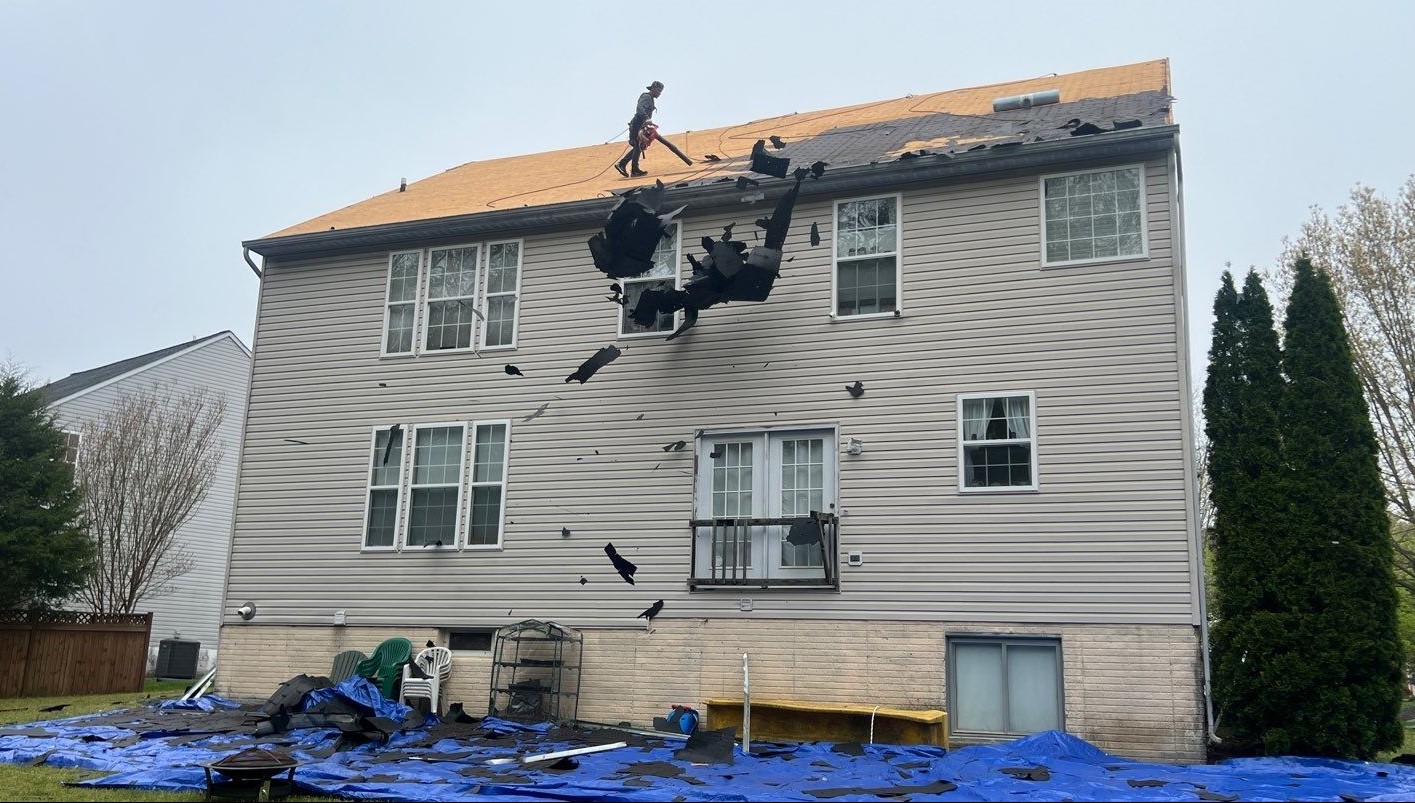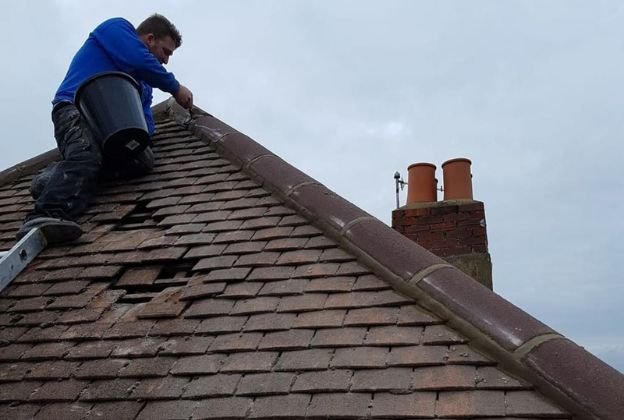Roof Repair Oahu: Expert Roof Repairs for Lasting Security
Roof Repair Oahu: Expert Roof Repairs for Lasting Security
Blog Article
Recognizing the Different Types of Roofing Systems: A Comprehensive Overview for Homeowners
With a range of alternatives-- varying from the typical gable to the contemporary flat-- each type offers one-of-a-kind advantages and obstacles that need to straighten with the house owner's ecological considerations and specific requirements. As we discover the complexities of various roof covering types, it becomes obvious that one dimension does not fit all; the appropriate option might shock you.
Gable Roof Coverings
Gable roof coverings, characterized by their triangular shape, are among one of the most prominent roof styles because of their simpleness and effectiveness in shedding water and snow. This layout features 2 sloping sides that fulfill at a ridge, enabling effective drainage and lessening the threat of water build-up. The high pitch generally connected with gable roofs boosts their capability to take care of hefty rainfall, making them suitable for various climates.
Along with their useful benefits, saddleback roofs provide aesthetic flexibility. They can be adapted to numerous architectural styles, from conventional to modern-day homes. The style can likewise accommodate added attributes such as dormer home windows, which boost natural light and ventilation in the attic room room.
Moreover, saddleback roofs provide ample area for insulation, contributing to energy performance. Property owners can select from a selection of roof covering products, consisting of asphalt shingles, metal, and floor tiles, even more improving modification options.
In spite of their benefits, gable roofings might require extra assistance in locations vulnerable to high winds or hefty snowfall. In general, the gable roofing continues to be a popular option because of its mix of capability, sturdiness, and aesthetic allure.
Apartment Roofs
Flat roofing systems are frequently identified for their minimal design and sensible applications, specifically in industrial and commercial setups (oahu roofing). These roofings feature a nearly horizontal or straight surface, which permits for simple building and flexible space use. While they might do not have the visual charm of pitched roofing systems, flat roofs provide many benefits, particularly in urban environments where making the most of space is critical
Among the key advantages of level roofings is their access. House owners can make use of the roofing area for numerous objectives, such as rooftop yards, balconies, or solar panel installations. Additionally, flat roofs are typically much more cost-efficient to maintain and mount contrasted to their sloped counterparts, as they call for less materials and labor.
Nevertheless, level roofing systems do existing particular challenges. Proper drain is vital to protect against water pooling, which can cause leaks and structural damage. Hence, choosing high-grade waterproofing products and regular inspections are vital for ensuring long life. Common products made use of for level roofing systems consist of built-up roofing (BUR), changed asphalt, and single-ply membranes, each offering unique advantages. Overall, level roof coverings function as a versatile and practical option for several property owners and businesses alike.
Hip Roofs
Hip roofings are defined by their sloped sides that merge on top, developing a ridge. This style is distinctive from saddleback roofs, as all 4 sides of a hip roof slope downwards towards the walls, offering a much more stable framework. The angle of the inclines can differ, enabling for versatility in architectural aesthetic appeals and functionality.
Among the key benefits of hip roofing systems is their capacity to endure heavy winds and negative climate condition. The sloped surface areas allow better water drain, lowering the threat of leaks and water damage. Additionally, hip roof coverings supply enhanced attic room, which can be made use of for storage or perhaps transformed into habitable locations.
Nonetheless, constructing a hip roofing can be much more complicated and pricey than simpler roof covering types, such as saddleback roofs. The added material and labor entailed in developing the inclines and making sure appropriate architectural integrity can bring about higher expenditures. Regardless of these disadvantages, several home owners favor see here hip roofs for their sturdiness, aesthetic charm, and possibility for energy effectiveness.
Mansard Roofings
Mansard roofings, commonly identified by their one-of-a-kind four-sided style, feature two slopes on each side, with the lower slope being steeper than the top. This architectural design, originating from France in the 17th century, is not only cosmetically enticing however functional, as it maximizes the usable space in the upper floorings of a building. The steep lower slope enables even more clearance, making it an excellent selection for lofts or attic rooms, which can be converted right into living spaces.
Mansard roofing systems are defined by their versatility, fitting various architectural designs, from traditional to modern. They can be built with various materials, including asphalt tiles, slate, or steel, Homepage offering property owners with a variety of options to match their budget plans and preferences. Furthermore, the style permits for the combination of dormer windows, boosting natural light and air flow in the upper degrees.
Nonetheless, it is vital to consider the prospective drawbacks. Mansard roofs may call for more upkeep because of the complexity of their design, and their steep inclines can be challenging for snow and rainfall overflow. On the whole, mansard roof coverings combine elegance with practicality, making them a prominent option among homeowners looking for unique architectural attributes.
Dropped Roofings
As property owners increasingly seek simplicity and functionality in their building styles, lost roof coverings have arised as a preferred choice. Identified by a single sloping airplane, a shed roofing system provides a minimal aesthetic that matches various home styles, from contemporary to rustic.
Among the main benefits of a shed roofing is its simple construction, which often equates to reduce labor and material expenses. This design permits reliable water drain, minimizing the danger of leakages and water damage. In addition, the upright slope supplies enough room for skylights, improving natural light within the interior.
Dropped roof coverings likewise provide versatility in regards to use. They can be efficiently integrated right into enhancements, garages, or outside structures like sheds and pavilions. Furthermore, this roof covering style can accommodate various roof materials, consisting of metal, asphalt roof shingles, or even eco-friendly roofings, lining up with environmentally friendly efforts.
However, it is important to think about regional climate conditions, as hefty snow loads might require changes to the roofing's angle or framework. On the whole, shed roofing systems present a practical and aesthetically pleasing alternative for home owners looking to maximize performance without endangering style.
Final Thought


Gable roof coverings, defined by their triangular shape, are among the most popular roofing designs due to their simplicity and effectiveness in dropping water and snow. oahu roofing. The steep pitch frequently linked with gable roofing systems enhances their ability to deal with heavy rainfall, making them ideal for different climates
While they may do not have the aesthetic charm of pitched roofing systems, level roof coverings offer numerous advantages, especially in city settings where maximizing space is crucial.

Report this page